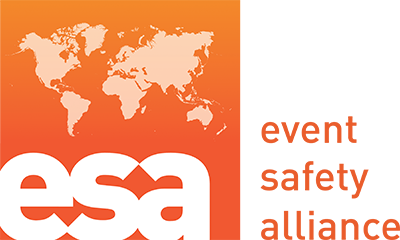COMMENTARY: Is the Paradigm Beginning to Shift?
In recent years, the event world has seen a myriad of crowd crushes, devastating hostile actions, bad actors attempting to gain the attention of the world media, audience ferocity, site and structural failures, labor shortages, performance cancellations due to mental wellness concerns, and other negative mass gathering risks that have exposed the public and private event stakeholders to great risk and possibly reputation-ending incidents.
Coordinated public and workforce safety oversight is at the forefront of the future event professional’s mindset. There’s growing momentum and higher prioritization toward safety, responsible behavior, and providing the resources which help to mitigate the risks. The incoming generation of event professionals are committed to ensuring the humans invited to an event, those who work the event, and their clients are protected throughout the event lifecycle.
The new vanguard of event professionals holds risk identification and mitigation as a high priority. It is increasingly common for event producers to deploy specialized public safety coordination services whose task is to integrate police, fire, medical, venue operations, and other agency stakeholders into their crisis response plans and provide operational safety oversight. Suppliers are being held to a higher standard for the quality and integrity of the gear they provide and the training of the humans who care for it. One need only peruse the web to see leading industry suppliers offering training and mentorship programs and a broad call for new talent.
Robust crisis planning and communication ensures that in the unlikely event of a disruption, plans are in place, communicated, and rehearsed in advance of an event to mitigate negative outcomes to the greatest extent possible.
Customer-focused, last-mile safety planning serves to ensure that those who gather feel safe and cared for by the event producers, improving the reputations of, and repeat business for, the event owners.
Haphazard, uninspired, and under-the-breath safety toolbox talks are giving way to meaningful, informed safety briefings which include highlighting the known physical risks present on the job site that day, potential weather threats, human stressors, where to seek assistance or shelter, and who to turn to if there is a sense of unsafe behaviors on the work site.
For a very small percentage of our industry, this may seem like old hat (and thank you for your leadership). Sadly, these mindsets are not yet the majority. Thankfully, there’s an expanding crop of new event professionals who view the task of managing safety as a priority and value the education and the tools to do so.
Those who control the money are beginning to take note.
Safe behaviors no longer exist as a punchline. The practical use of PPE and concern for mental wellness on the job site is gaining greater momentum and respect daily. A willingness and ability to stand up for one’s well-being is becoming a reality, it’s easier now to be a professional who prioritizes safety as a matter of doing business. Is it possible that mindsets are beginning to evolve?
I’m hopeful that we may have begun to turn the corner.
-Jim Digby, President of the Event Safety Alliance
###
In support of the future described in the editorial, ESA is calling for contributors to the Event Safety Alliance and ESTA’s Technical Standards Program review of the American National Standards Institute draft standard for Event Safety Planning, Management, and Major Incidents ANSI Code BSR ES1.2 - 202x.
We are calling for contributors from all corners of the live event industry to help shape this standard and contribute your expertise. We should strive to achieve consensus on this work-in-progress to ensure it captures our collective truth. You are needed to help memorialize the practices which inform and empower our industry to do better, holding ourselves to a higher degree of accountability in the planning and action process of safety. When complete this will become one of our industry's foundational standards. As such, it should have the voice of the qualified masses.
Deadline for commenting is April 25th, we encourage all readers to review and provide input to ensure the standard is balanced and usable across the live event sector.



